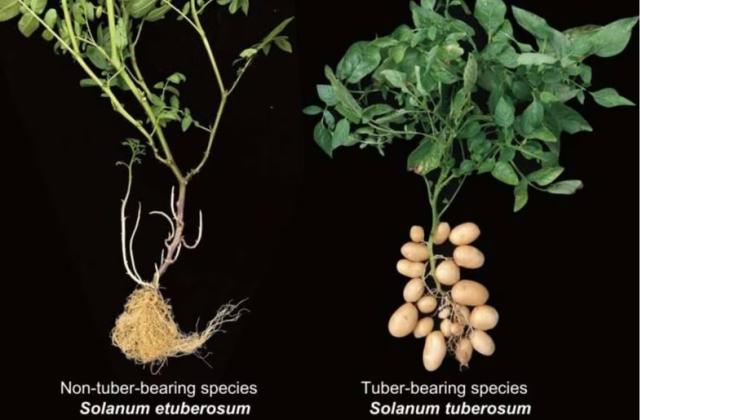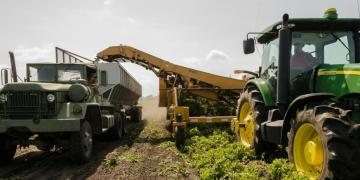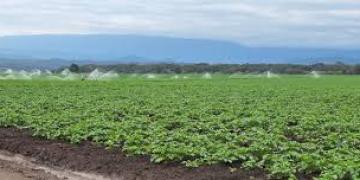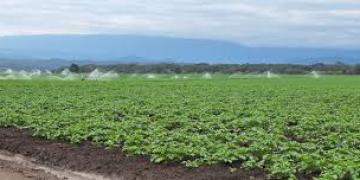Science: Research reveals that the potato evolved from a wild tomato nine million years ago.
A genomic analysis conducted by an international team identified this natural hybridization event between Andean species.

A scientific study has solved a long-standing scientific mystery by identifying that the modern potato originated from a natural hybridization between tomato -like plants and species known as Etuberosum .
This crossing allowed the formation of the tuber and has been fundamental for its adaptation, expansion and diversity.
A team of researchers from the Chinese Academy of Agricultural Sciences , led by Sanwen Huang , conducted a genomic analysis to clarify the evolutionary origins of the potato. The work was published in the journal Cell . According to CNN , the study included the examination of 450 crop genomes and 56 wild species genomes, constituting a comprehensive collection of genomic data.
The discovery solves a long-standing scientific mystery about the origin of the potato and provides clues to its conservation (Illustrative Image: Infobae)“Wild potatoes are very difficult to sample, so this dataset represents the most comprehensive collection of wild potato genomic data ever analyzed,” said Zhiyang Zhang , first author of the paper and a researcher at the Shenzhen Institute of Agricultural Genomics.
The analysis revealed that current potato species contain a stable and balanced mix of genetic material from both Etuberosum and tomato -like plants . This finding indicates that the potato originated from an ancient hybridization between the two, an event that occurred approximately nine million years ago in the Andean region of South America.
The research also determined that although Etuberosum and the tomato are distinct species, they shared a common ancestor about 14 million years ago. This hybridization process was made possible, in part, by pollination by bees, which carried pollen between the two species, explained Amy Charkowski , associate dean for research at the College of Agricultural Sciences at Colorado State University, in statements reported by CNN .
The research highlights the importance of bee pollination in the hybridization process between ancestral potato species (Illustrative image: Infobae)JianQuan Liu , a professor at Lanzhou University’s School of Ecology and co-author of the study, explained that the team used phylogenetic analysis to determine the relationships between the different plants. "The analysis revealed a contradiction: potatoes could be related to either tuberosums or tomatoes, depending on different genetic markers," Liu noted. This contradiction was resolved when they discovered that the potato is actually the result of a hybridization between the two evolutionary lines.
The difficulty in tracing the potato ’s lineage is due, in part, to the limited preservation of plants in the fossil record. Therefore, researchers turned to genetic markers present in current species to reconstruct the potato’s evolutionary past. "What we’re using is a signal that comes from the past, that’s still in the plants we have today, to try to reconstruct the past," explained Sandy Knapp , a botanist at the Natural History Museum in London and co-author of the study, in statements reported by CNN .
One of the study’s most significant findings was the identification of the genes responsible for tuber formation , an evolutionary innovation that distinguishes the potato from its close relatives. The SP6A gene , which acts as a "master switch" to tell the plant when to start producing tubers, originates from the tomato lineage . The IT1 gene , which controls the growth of the underground stems that form tubers, originates from the Etuberosum lineage .
The hybridization that gave rise to the potato occurred about nine million years ago in the Andean region of South America (Illustrative image Infobae)The combination of these two genes in the hybrid offspring was essential for the emergence of the tuber. Without the presence and functioning of SP6A and IT1 together , the resulting plants would not have been able to form tubers. “It’s like shuffling a deck of cards again and finding different cards in different combinations. And fortunately for this particular hybridization, two types of genes came together, creating the ability to form tuber plants, and that’s a serendipitous event,” Knapp described .
Zhiyang Zhang emphasized the magnitude of the work: “This dataset represents the most comprehensive collection of wild potato genomic data ever analyzed.” Sandy Knapp , meanwhile, highlighted the uniqueness of the hybridization event that gave rise to the tuber: “It’s like shuffling a deck of cards and finding different cards in different combinations. And fortunately for this particular hybridization, two types of genes came together, creating the ability to tuberize, and that’s a serendipitous event.”
As Knapp explained , the Andes became a complex backbone with numerous valleys and a wide variety of ecosystems, which favored the diversification of plant species.
The development of the tuber allowed the potato to adapt to hostile environments and favored its diversification in the Andes (Freepik)While modern tomatoes prefer dry, warm environments, and Etuberosum thrive in temperate climates, the hybrid potato evolved to thrive in the dry, cold, and high-altitude habitats characteristic of the Andes. The tuber allowed the plant to store nutrients underground, giving it a significant advantage in surviving the harsh conditions of the mountains.
Sanwen Huang , lead author of the study, highlighted the significance of this finding: “The development of a tuber gave potatoes a huge advantage in harsh environments, driving an explosion of new species and contributing to the rich diversity of potatoes we see and depend on today.”
The discovery of the potato ’s evolutionary origins has been greeted with interest by the scientific community. "We have finally solved the mystery of the potato’s origin," said Sanwen Huang of the Chinese Academy of Agricultural Sciences, as reported by CNN . The study not only sheds light on the past of one of the world’s most important crops, but also provides valuable information for the conservation and genetic improvement of the potato.
Fuente:




